Basic Math Skills Normal Geometry Worksheets for Ages 3-9
6 filtered results
-
From - To
Welcome to our Basic Math Skills Normal Geometry Worksheets designed for children ages 3-9! Our engaging worksheets provide an interactive way for young learners to explore fundamental geometric concepts, such as shapes, sizes, and spatial awareness. By completing these worksheets, children will develop essential math skills while enjoying fun activities tailored to their age group. Each worksheet encourages critical thinking and problem-solving, ensuring that your child builds a solid mathematical foundation. Whether at home or in the classroom, these resources are perfect for fostering a love of learning and geometry. Start exploring geometry with us today and watch your child's skills flourish!
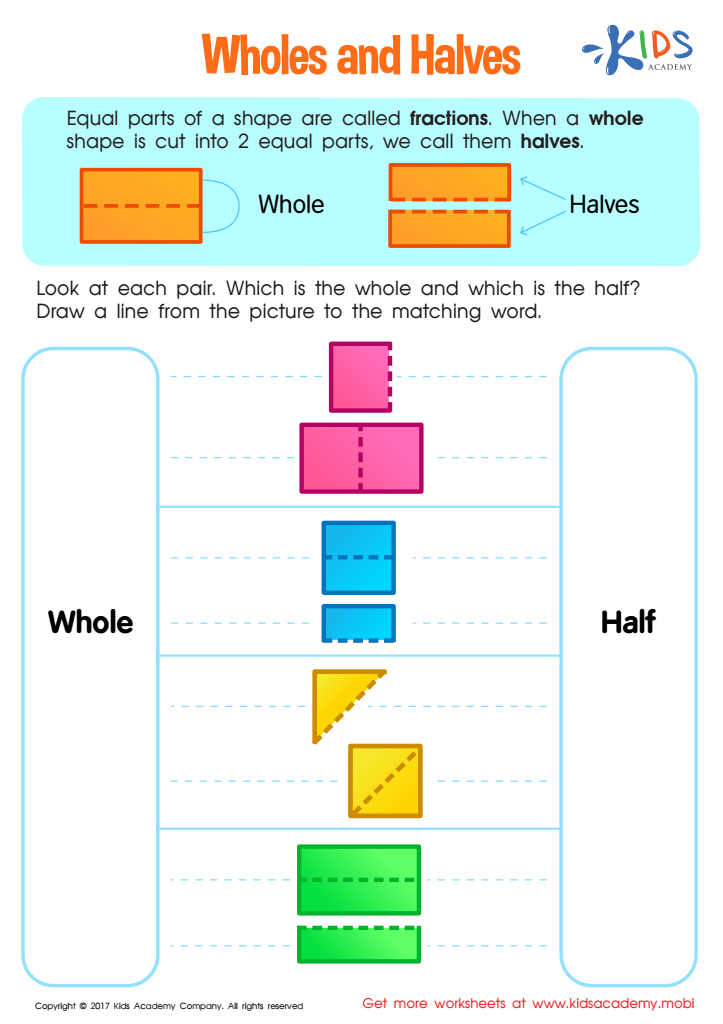

Wholes and Halves Worksheet


Going up or Down? Worksheet
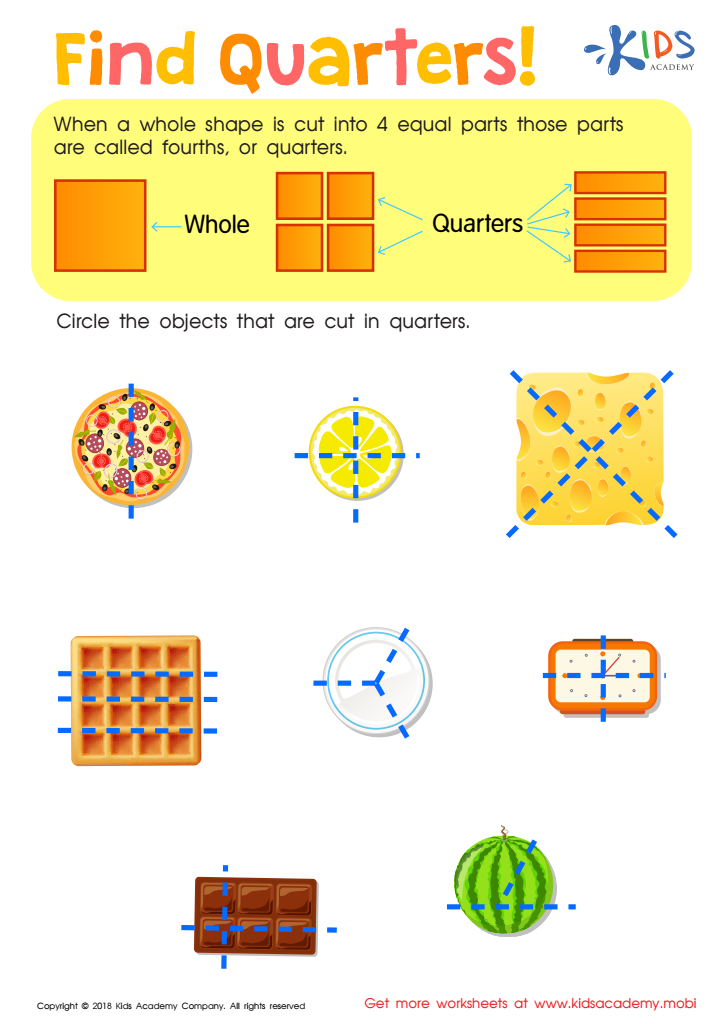

Find Quarters Worksheet
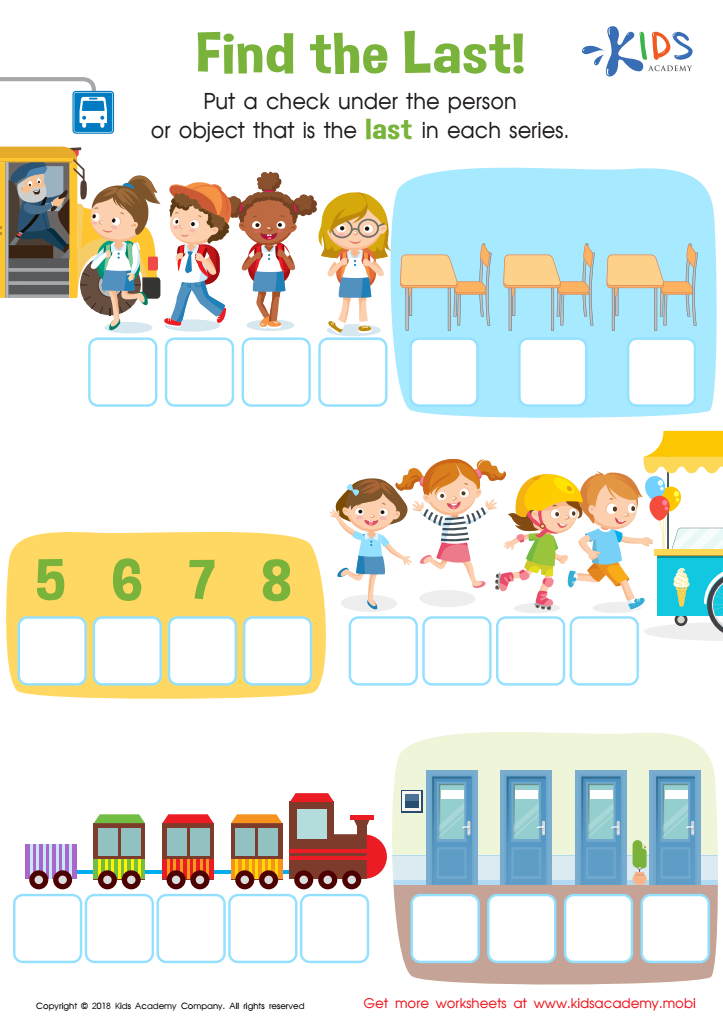

Find the Last! Worksheet
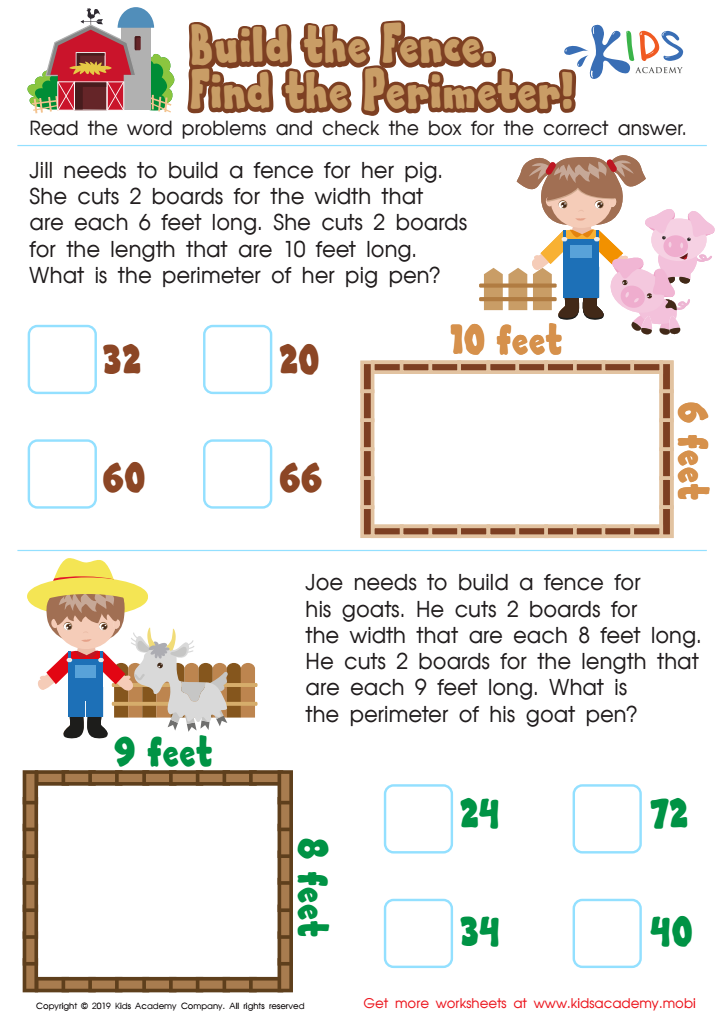

Build the Fence, Find the Perimeter Worksheet
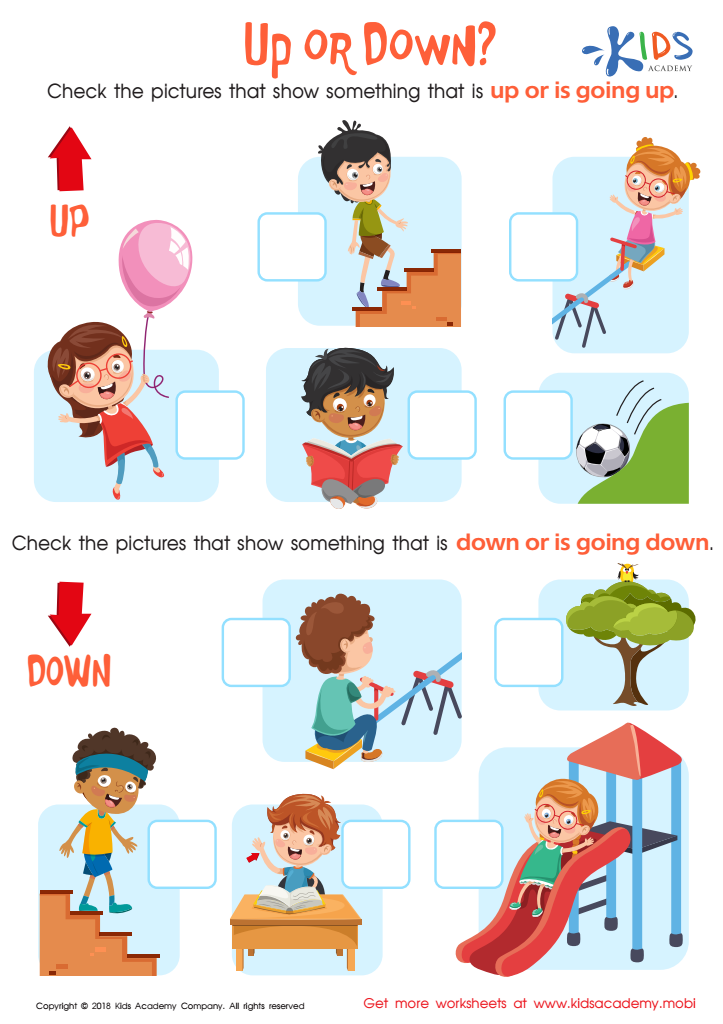

Up or Down Worksheet
Basic math skills, including normal geometry, are crucial for children aged 3-9 as they lay the foundation for their overall cognitive development. During these formative years, children develop critical thinking and problem-solving abilities, both of which are enhanced through engaging with math and geometry concepts.
Firstly, introducing basic math and geometry motivates children's natural curiosity and desire to explore and make sense of the world around them. By recognizing shapes, understanding spatial relationships, and grasping simple measurements, young learners enhance their visual and spatial reasoning, skills vital for later learning in subjects like science, technology, engineering, and mathematics (STEM).
Secondly, proficiency in basic math fosters confidence and perseverance. When children successfully learn to identify, categorize, and manipulate shapes and patterns, they build foundational skills that bridge into more complex mathematical concepts. This progression resonates during their formative school years, enhancing both academic performance and self-esteem.
Lastly, having a strong grasp of basic math skills, including geometry, prepares children for everyday situations, enabling them to make sense of the environment, solve practical problems, and become informed decision-makers in the future. Therefore, parents and teachers should prioritize foundational math and geometry for the overall development and success of children.
 Assign to My Students
Assign to My Students


























